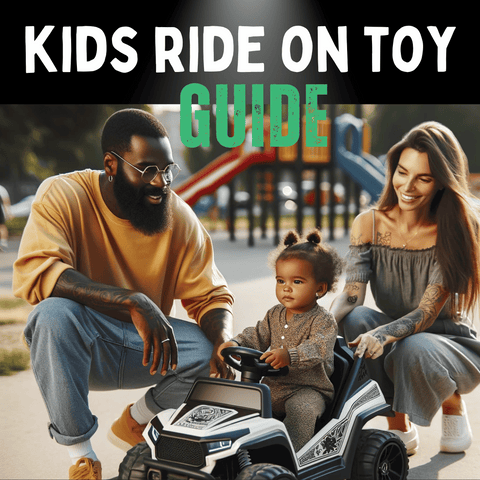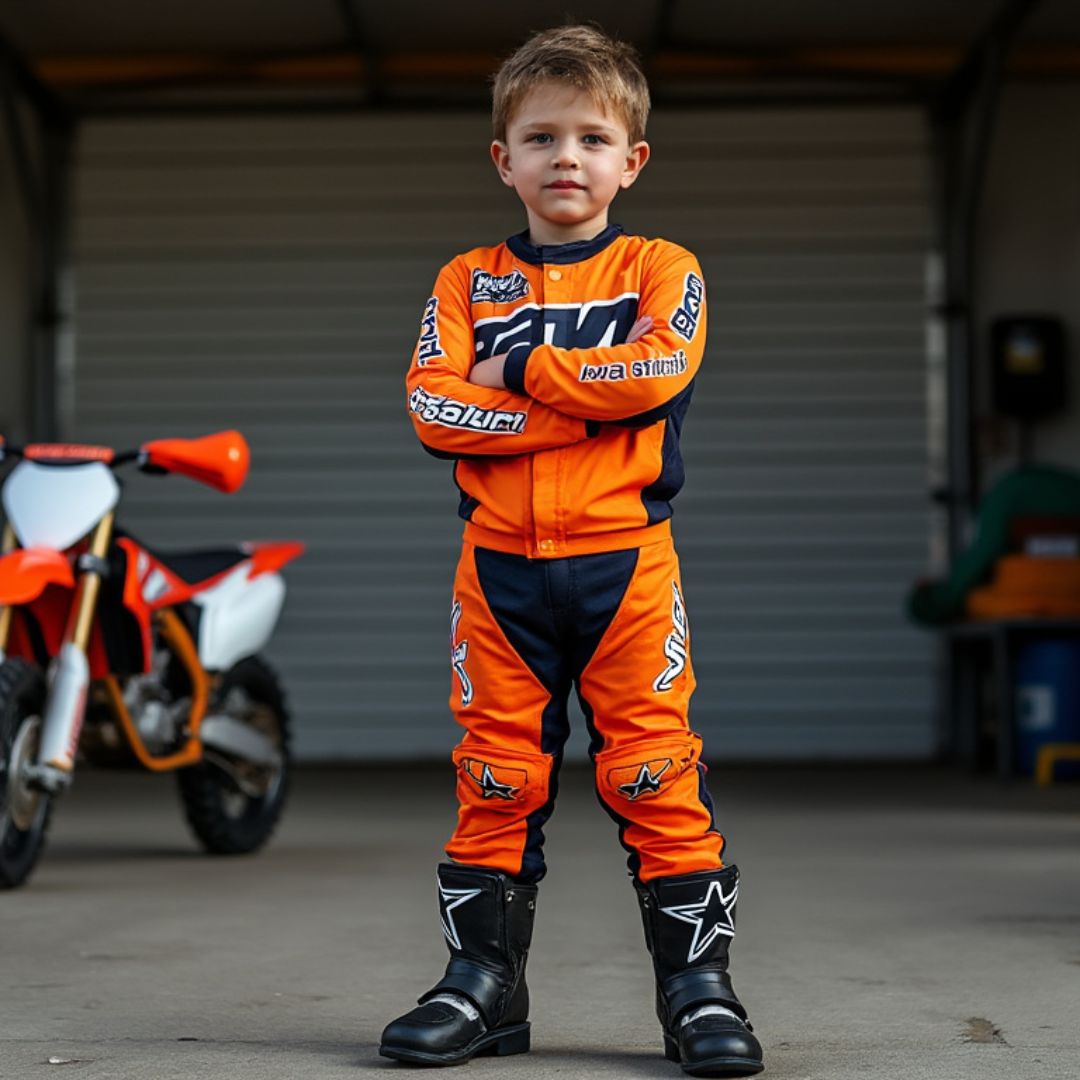
Teaching your little ones how to balance on a ride-on toy is much more than just a fun pastime—it's a crucial step in their physical development.
Let's dive into the hows and whys of balancing skills, offering practical tips and heartfelt encouragement along the way.
Balance
Balance is a foundational skill, not just for budding cyclists or skateboard enthusiasts, but for all aspects of a child's growth.
It's the cornerstone of physical activity, playing a vital role in developing coordination, boosting confidence, and ensuring safety.
Like the pieces of a puzzle coming together, balance integrates with other motor skills to support a child's overall physical prowess.
It's about more than staying upright; it's about navigating the world with ease and assurance.
We're about to embark on a journey through the essential steps parents can take to support their children in mastering the art of balance on a ride-on toy.
From selecting the right gear to encouraging regular practice, let's get rolling!
Start with a Stable and Appropriate Ride-On Toy
The quest for balance begins with the right ride-on toy. It's about finding that perfect match for your child's age, size, and skill level.
Look for toys with a low centre of gravity and a stable base. These design features minimise the risk of tipping, making it easier for your child to maintain balance.
Adjustable ride-on toys are a real game-changer. They adapt to your child's growing skills, ensuring that the ride-on toy remains both challenging and safe as they grow.
Choosing the Right Type of Ride-On Toy:
The market is flooded with an array of ride-on toys, each offering different benefits and challenges.
From pedal bikes to scooters and balance bikes, selecting the right type can significantly impact your child's success and enjoyment.
For beginners, a balance bike without pedals allows children to focus solely on balancing without the complexity of pedaling.
As their confidence grows, transitioning to pedal bikes or scooters can introduce new skills.
Consider your child's age, physical abilities, and interests when choosing, ensuring the toy is engaging and appropriately challenging.
Create a Safe Learning Environment
A safe, open space is the ideal stage for your child to practice and perfect their balancing act.
Clear the area of any obstacles that could pose a risk, and always be there to supervise.
Your presence is reassuring and necessary for their safety.
This is a team effort. Your guidance can make all the difference, turning practice sessions into fun, bonding experiences.
Teach Proper Posture and Body Positioning
Balance is all about alignment. Teach your child to sit up straight and look ahead, not down at their feet.
Show them how to distribute their weight evenly. Leaning too far in any direction can throw them off balance.
Sometimes, all it takes is a helping hand. Support your child as they find their most comfortable and effective riding posture.
Using Visual and Verbal Cues for Balance:
Children learn best through a combination of demonstration and clear instructions.
Use visual cues, such as showing how to lean slightly forward when starting to move, or pointing out the alignment of the head, shoulders, and hips for optimal balance.
Complement these with verbal cues, encouraging your child to "look ahead" or "keep your body straight." Make learning interactive by asking them to mimic your posture or by using games that incorporate these cues, such as "Simon Says" with balance-focused commands.
Introduce Gradual Progression and Challenges
Begin with the basics, like rocking back and forth or pushing along in a straight line. These simple activities build confidence and skill.
As they get more comfortable, introduce new challenges like turns, curves, and even small obstacles.
Celebrate every success, no matter how small. Your encouragement fuels their motivation and joy in learning.
Monitoring Progress and Adjusting Challenges:
As your child practices, keep a keen eye on their progress, looking for signs of increased confidence and skill.
When they seem ready, gradually introduce new challenges to keep them engaged and learning.
This could mean setting up a simple obstacle course, practicing on slight inclines, or encouraging them to lift their feet for longer periods.
Be mindful to adjust the difficulty based on their reactions; if a task seems too daunting, break it down into smaller, more manageable steps.
Celebrate their successes and provide encouragement and support for attempts, regardless of the outcome.
Practice Core Strength and Stability Exercises
A strong core is key to good balance. It's the powerhouse that keeps us stable and upright.
Incorporate fun activities that strengthen the core, like standing on one leg or trying out child-friendly yoga poses.
There are plenty of resources out there with exercises to build core strength. A little research can provide you with a wealth of ideas.
Encourage Regular Practice and Repetition
Like any skill, balance improves with practice. The more your child rides, the better their balance will become.
Dedicate time each day for practice. It doesn't have to be long—a few minutes can make a big difference.
Make balancing fun by including it in daily play. Games and challenges can turn practice into an exciting adventure.
Setting Achievable Goals and Celebrating Milestones:
Goal setting can transform the learning process into an exciting and rewarding journey.
Work with your child to set realistic, achievable goals, such as "today, I'll balance for five seconds," or "I'll ride through the garden without stopping." Small, measurable objectives not only provide clear targets but also make it easier to recognize and celebrate progress.
Each milestone achieved is an opportunity for positive reinforcement, whether through verbal praise, a sticker chart, or a small reward.
These celebrations boost motivation and reinforce the value of perseverance and practice.
Conclusion
From choosing the right ride-on toy to practicing core strengthening exercises, we've covered the essentials of teaching your child how to balance.
Remember, patience and consistency are your best tools. Every child progresses at their own pace, and your support is invaluable.
Developing balance is not just about the here and now—it's an investment in your child's future.
The skills they learn today will support their physical and cognitive development for years to come.
Navigating the path to balance with your child is a journey filled with challenges and triumphs. Embrace each moment, celebrate every milestone, and enjoy the ride together!
Frequently Asked Questions
What age is appropriate to start teaching my child to balance on a ride-on toy?
Children can start learning to balance on ride-on toys as early as 18 months old. At this age, focus on ride-on toys that are low to the ground and don't require pedaling. This allows toddlers to use their feet to push off the ground and stop themselves, which helps in developing balance. By the age of 3 to 5 years, children are typically ready to transition to balance bikes, where they can hone their skills further before moving on to pedal bikes.
How long does it usually take for a child to learn how to balance on a ride-on toy?
The time it takes for a child to learn how to balance varies widely depending on the child's age, development, and the amount of practice time. Generally, with consistent practice, many children can begin to show improvement in their balance within a few weeks to a couple of months. Remember, each child is unique, and it's important to progress at their own pace without rushing them.
Can my child use a ride-on toy indoors, or is it strictly for outdoor use?
Many ride-on toys are versatile enough to be used both indoors and outdoors, depending on their size and the type of wheels they have. For indoor use, ensure there's enough space for your child to maneuver safely without damaging furniture or walls. Soft, rubber wheels are preferable for indoor use to prevent scratching floors. Outdoor practice provides a different experience with more space and varied terrains, which can be beneficial for developing balance.
What safety gear should my child wear while learning to balance on a ride-on toy?
Safety is paramount when your child is learning to balance on a ride-on toy. At a minimum, your child should wear a helmet to protect against head injuries. As they gain confidence and speed, consider adding knee and elbow pads to protect against scrapes and bruises from falls. Make sure the safety gear is appropriately sized for your child to ensure maximum protection and comfort.
Get in Touch 🚀
Loved our article on “Teaching Your Kids How To Balance On A Ride On Toy” Got the itch to dive into more wheely-awesome info?
Whether you're a parent or a grandparent, we're here for all your kids ride-on toy questions! 🚗💨
Feeling click-happy?
Jump straight into our wonderland at RiiRoo.com.
Or, if you're more the chatty type, give our Live Chat a whirl and let's talk toys!







Share:
Here's Why You Should Be Recycling Your Kids Toys
What Is The Difference Between Front, Back And All Wheel Suspension In Ride On Cars?